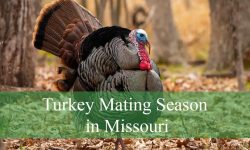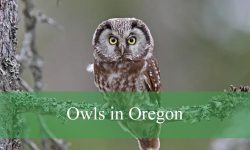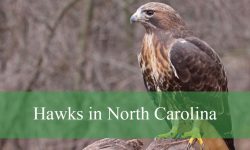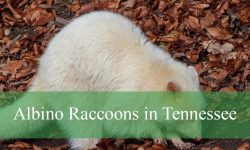Swans in Oregon are a beautiful sight, especially during the colder months when migratory flocks arrive. With their elegant forms and graceful movements, these large waterbirds stand out in wetlands, lakes, and fields across the state. Birdwatchers often spot them in peaceful areas like Sauvie Island or the Klamath Basin.
There are 4 types of swans in Oregon that have been recorded, each with its own unique characteristics. These include the native Tundra and Trumpeter Swans, the introduced Mute Swan, and the rare Whooper Swan from Eurasia. Learning how to identify them by size, bill shape, and vocalizations can help you tell them apart in the wild.
This guide will walk you through all four types of swans in Oregon with helpful pictures and identification tips. Recognizing these swans can add excitement to your next birding adventure
Common Swans Found in Oregon
Tundra Swan (Cygnus columbianus)

The Tundra Swan is the most commonly seen swan in Oregon, especially during the winter months. This medium-sized swan has a graceful all-white body, a long neck, and a black bill that often features a small yellow patch near the eye—one of the main distinguishing traits from other swans. Adults typically measure around 47–58 inches in length, with a wingspan of up to 66 inches. In flight, their necks are straight and extended, and they produce clear, high-pitched honking calls that differ from the deeper tones of Trumpeter Swans.
In terms of diet, Tundra Swans are herbivores that feed on aquatic vegetation, tubers, and grains. During migration or wintering periods, they often forage in shallow wetlands, lakes, and flooded agricultural fields. They use their strong necks and bills to uproot submerged plants or glean spilled grain from fields, especially in the Willamette Valley and Klamath Basin.
Behaviorally, Tundra Swans are social birds, usually seen in large flocks, particularly in winter. They migrate in family units and form V-shaped flight formations during long-distance travel. Tundra Swans begin arriving in Oregon around November and can remain through March, depending on climate conditions. Their courtship involves synchronized head bobbing and mutual preening.
In Oregon, Tundra Swans are frequently observed in large numbers at major wildlife refuges, such as Sauvie Island Wildlife Area, Malheur National Wildlife Refuge, and Summer Lake Wildlife Area. These areas provide the open, shallow waters and agricultural landscapes they prefer for resting and feeding during their migration between Arctic breeding grounds and Pacific Northwest wintering sites.
Trumpeter Swan (Cygnus buccinator)

The Trumpeter Swan is the largest native swan in North America and one of the most majestic waterfowl found in Oregon. This species boasts an entirely white plumage, a massive body, and a long, straight black bill that seamlessly connects to the black facial skin. It lacks the yellow eye spot found in the Tundra Swan. Adults can reach lengths of 54–62 inches and have wingspans of up to 80 inches, weighing as much as 30 pounds—making them the heaviest flying birds in North America.
Trumpeter Swans primarily feed on aquatic vegetation, roots, and tubers. In summer, they graze on submerged plants in freshwater marshes and ponds. In wintering areas like Oregon, they supplement their diet with leftover grains in harvested fields. They use their long necks to reach down into water and soft mud to pull up food sources, often feeding alongside Tundra Swans but generally remaining more isolated or in smaller family groups.
Behaviorally, they are less vocal than Tundra Swans but emit deep, resonant trumpet-like calls, hence their name. Trumpeter Swans are territorial and monogamous, forming lifelong bonds. They nest near quiet wetlands and display defensive behaviors when disturbed. In Oregon, they’re not as numerous as Tundra Swans but have been increasing due to conservation and reintroduction programs, particularly in the eastern and southern parts of the state.
Good places to observe Trumpeter Swans in Oregon include the Klamath Basin, Summer Lake Wildlife Area, and the Malheur National Wildlife Refuge. They are more often found in less disturbed, shallow lakes and wetlands. These swans typically arrive in late fall and remain through the winter, although some individuals may linger into early spring depending on habitat conditions.
Mute Swan (Cygnus olor)

The Mute Swan is an introduced species in North America, originally brought over from Europe for ornamental purposes. It is characterized by its elegant appearance, long, curved neck held in a graceful “S” shape, and bright orange bill topped with a prominent black knob. Unlike the native swans, Mute Swans often raise their wings into a distinctive arch, especially when swimming. Adults are slightly smaller than Trumpeter Swans, with lengths of 50–60 inches and wingspans reaching about 80 inches.
As with other swans, Mute Swans are herbivores and feed on a wide variety of aquatic plants, roots, and algae. They often forage in shallow water by tipping forward and using their long necks to access submerged vegetation. In urban or suburban parks, they may also eat grains or food offered by people, which can make them seem unusually tame compared to wild swans.
Mute Swans are known for their aggressive behavior, especially during the breeding season. They are territorial and can drive away native waterfowl, which has led to concerns about their impact on ecosystems. Unlike Tundra and Trumpeter Swans, Mute Swans do not migrate and tend to stay in one location year-round, provided the water does not freeze over.
In Oregon, Mute Swans are rare and are usually found in ornamental lakes, city ponds, or private properties. They are not considered part of the state’s natural avifauna and are often the result of escaped or released captive birds. While beautiful, they are monitored closely to prevent the spread and potential displacement of native species.
Whooper Swan (Cygnus cygnus)

The Whooper Swan is a rare and accidental visitor to Oregon, native to Europe and Asia. It is similar in appearance to the Tundra Swan but slightly larger and has a striking yellow and black bill—distinctively more yellow than that of the Tundra Swan. Whooper Swans measure about 55–65 inches in length, with wingspans between 85–95 inches. Their upright posture and long, straight neck add to their elegant look in flight and on water.
Their diet consists mainly of aquatic vegetation, grains, and grasses, similar to other swans. They forage in wetlands and shallow lakes and are known to graze on farmland during migration. Like Tundra Swans, Whoopers are strong, long-distance migrants but are adapted to Eurasian flyways rather than the Pacific routes of North America.
Behaviorally, Whooper Swans are vocal birds with loud, honking calls that are more musical than the brassy notes of Trumpeter Swans. They breed in northern Europe and Asia and migrate south for winter. Vagrant sightings in North America are extremely rare and are typically attributed to escaped captive birds or occasional wayward migrants that veer off course during transcontinental flights.
In Oregon, Whooper Swans are classified as rare visitors (vagrants), with very few confirmed sightings over the years. When spotted, they are usually found among flocks of Tundra Swans, making them challenging to identify without careful observation. Birders hoping to glimpse a Whooper Swan in Oregon would need luck and timing, especially in wintering areas like the Willamette Valley or Klamath Basin during peak migration.
FAQ About Swans in Oregon
What is the most common swan species in Oregon?
The Tundra Swan is the most commonly seen swan in Oregon, especially during the winter months. Large flocks often gather in wetlands, agricultural fields, and wildlife refuges such as Sauvie Island and the Klamath Basin.
When is the best time to see swans in Oregon?
The best time to observe swans in Oregon is from late fall through early spring. Migratory swans, particularly Tundra and Trumpeter Swans, arrive around November and often remain through March.
Where can I see swans in Oregon?
Top locations for swan watching include:
-
Sauvie Island Wildlife Area (near Portland)
-
Klamath Basin National Wildlife Refuges
-
Summer Lake Wildlife Area
-
Malheur National Wildlife Refuge
These areas offer open water, wetlands, and fields where swans rest and feed during migration.
How can I tell the difference between Trumpeter and Tundra Swans?
While both are white with black bills, Tundra Swans usually have a small yellow spot near the eye, while Trumpeter Swans do not. Trumpeter Swans are also larger and have a deeper, trumpet-like call compared to the higher-pitched honks of Tundra Swans.
Are Mute Swans native to Oregon?
No, Mute Swans are not native to Oregon. They are introduced species from Europe and are rarely seen in the wild. When present, they are typically found in city parks, ornamental lakes, or private ponds.
Have Whooper Swans been seen in Oregon?
Yes, but Whooper Swans are extremely rare in Oregon. They are considered vagrants from Europe or Asia and are only occasionally reported, often mixed with flocks of Tundra Swans.
Do swans stay in Oregon year-round?
Most swans in Oregon are seasonal migrants, especially the Tundra and Trumpeter Swans. However, Mute Swans—when present—may remain year-round in non-freezing ornamental ponds.
What do swans eat in Oregon?
Swans feed on aquatic plants, roots, and tubers, and in agricultural areas, they also consume grains and leftover crops. Their diet varies depending on the habitat and season.






